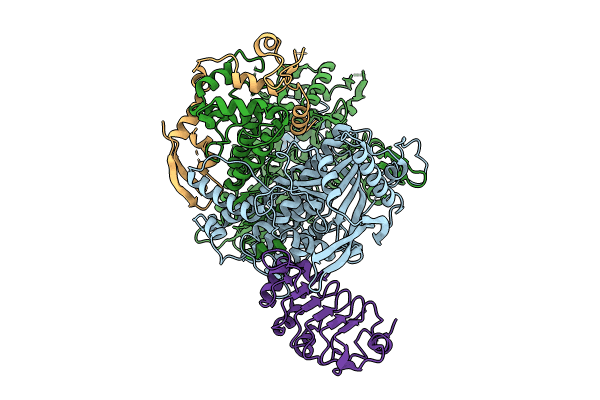
Deposition Date
2023-11-02
Release Date
2024-05-08
Last Version Date
2024-07-31
Entry Detail
PDB ID:
8R1L
Keywords:
Title:
Structure of avian H5N1 influenza A polymerase in complex with human ANP32B.
Biological Source:
Source Organism:
Homo sapiens (Taxon ID: 9606)
Influenza A virus (Taxon ID: 11320)
Influenza A virus (Taxon ID: 11320)
Host Organism:
Method Details:
Experimental Method:
Resolution:
3.10 Å
Aggregation State:
PARTICLE
Reconstruction Method:
SINGLE PARTICLE


